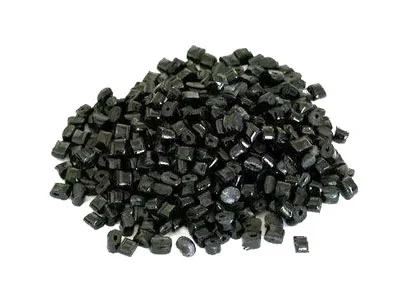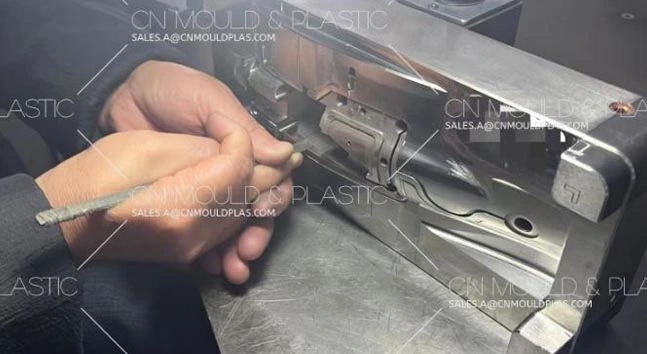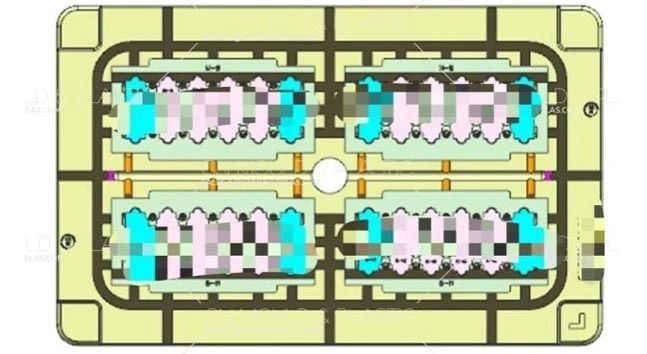12-30
(1) Drawbacks of Polishing Quality Issues1) The edge of the cavity’s inner hole may have collapsed corners, mixed angles, or bruises, and after polishing, the opening of the inner hole may enlarge (c...
Polyhexamethylene adipamide, commonly known as PA66, is a thermoplastic resin that is generally made from the condensation of adipic acid and hexamethylene amine.It insolubles in general solvents, only solubles in m-benzol, etc. It has the characteristics of high mechanical strength and hardness. It can be used as engineering plastics, mechanical accessories such as gears and lubricating bearings. It can also replace non-ferrous metal materials to make machine shells, automotive engine blades, etc., and can also be used to make synthetic fibers.

| PA66 | Zytel® 70G30HSLR BK099 | Vydyne® 21SPC polyamide 66 | Ultramid® A3HG6 HR bk 23591 | GRILON TSG-30/4 V0 | Unit | Testing Standard |
| Data sheet | Click to Download | |||||
| Manufacturer | Dupont | Vydyne | BASF | EMS | ||
| Description | 30% Glass Reinforced, Heat Stabilized, Hydrolysis Resistant, Polyamide 66 | Vydyne 21SPC is a general-purpose PA66 resin. Available in natural color. It is designed principally for injection-molding fabrication. This resin offers a well balanced combination of engineering properties characterized by high strength; rigidity; good toughness; high melt point; good surface lubricity; abrasion resistance; and resistance to many chemicals, machine and motor oils, solvents and gasoline. | Glass fibre reinforced injection moulding grade with good resistance to hydrolysis. I.e.: for applications in automotivecooling circuit | Grilon TSG-30/4 V0 is a heat stabilised, flameretardant, self-extinguishing engineering thermoplastic, reinforced with glass-fibre 30% (by weight) based on a semi-crystalline Polyamide-66- Polyamide-6-alloy. | ||
| Appearance | Natural color | Natural color | Natural color | Red | ||
| UL Yellow Card | E41938-234406 | E70062 | / | / | ||
| Physical | Dry | Dry | Dry | Dry | Unit | Test Method |
| Density | 1.37 | 1.14 | 1.37 | 1.44 | g/cm³ | ISO 1183 |
| Mechanical | Dry | Dry | Dry | Dry | Unit | Test Method |
| Tensile Modulus | 1450000 | 450000 | 6800(MPa) | 10500(MPa) | psi | ISO 527-2 |
| Tensile Stress(Break) | 28300 | 7980 | 120(MPa) | 150(MPa) | psi | ISO 527-2 |
| Tensile Strain(Yield) | 3 | 5 | 5.4 | 2.5 | % | ISO 527-2 |
| Impact | Dry | Dry | Dry | Dry | Unit | Test Method |
| Charpy Notched Impact Strength(23°C) | 12 | 2.4(-22°F, ft.lb/in²) | 12 | 9.5 | kJ/m² | ISO 179/1eA |
| Charpy Unnotched Impact Strength(23°C) | 75 | No Break(-22°F) | 71 | 65 | kJ/m² | ISO 179/1eU |
| Notched lzod Impact Strength(23°C) | 12 | 2.4(-22°F, ft.lb/in²) | 9 | / | kJ/m² | ISO 180/1A |
| Thermal | Dry | Dry | Dry | Dry | Unit | Test Method |
| Heat Deflection Temperature | 253 | 158(°F) | 250 | 235 | °C | ISO 75-2/A |
| Melting Temperature | 262 | 500(°F) | 260 | 260 | °C | ISO 11357-3 |
| Electrical | Dry | Dry | Dry | Dry | Unit | Test Method |
| Compared to the creepage resistance index | PLC1 | PLC0 | PLC1 | PLC1 | / | UL 746 |
| Comparative Tracking Index | 400 | 600 | 450 | 600 | / | IEC 60112 |
| Flammability | Dry | Dry | Dry | Dry | Unit | Test Method |
| Flame Rating | HB | V-2(UL94) | HB | V-0(UL94) | rating | IEC 60695-11-10,-20 |

